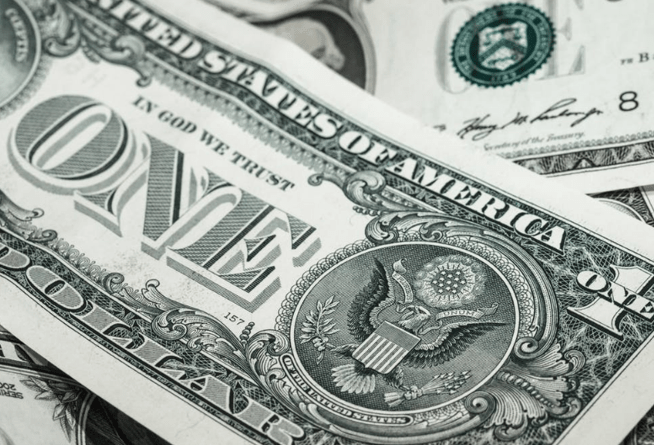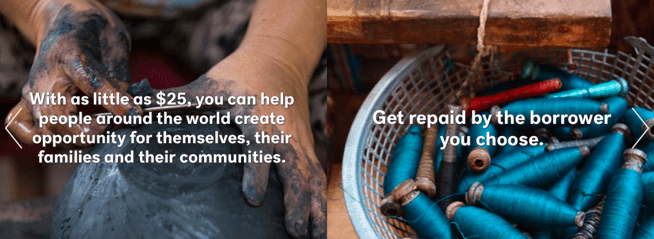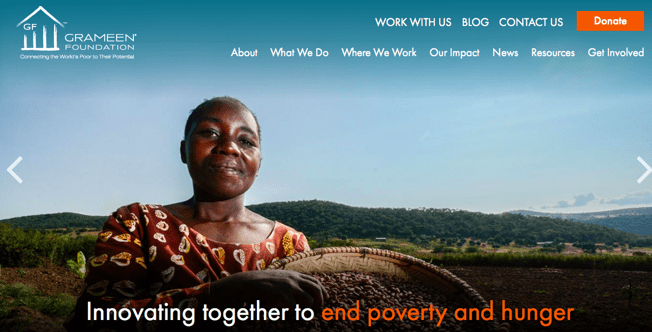Want to Understand Microfinance, Microcredit, and Microlending? Look No Further!
You may hear the terms microfinance or microcredit being thrown around – especially when people are talking about boosting the economies of developing countries. You may even hear about a microfinance lender or microfinance institutions.
But what is microfinance? We are here to explain it and tell you everything you need to know in this year’s guide. We will cover the following points:
- A definition of microfinance
- A microcredit defenition
- An explanation of a microfinance lender
- A description of how these loans work
- A rundown of other popular microfinancing options
- A discussion on the criticism of microlending
- A discussion on the support of microlending
- A list of top microfinance institutions outside of the United States
- A list of top microfinance institutions inside the United States
After you have gone through this guide on small loan financing, you will have a better idea of what this type of financing brings to the table and what a microfinance lender is actually offering.
See Also: Best Credit Cards for Rewards | Ranking & Reviews | Top Rewards Credit Cards
What Is Microfinance? A Definition of Microfinance
As we start this how-to guide, we must first answer the question, “What is microfinance?” with a definition of microfinance.
Microfinance Definition: Microfinance refers to all banking services that offer financial options to low-income people or unemployed people. Microfinance institutions can offer savings plans, loans, and insurance policies.
Microfinance Gateway adds to the microfinance definition:
This practice “refers to a movement that envisions a world where low-income households have permanent access to high-quality and affordable financial services to finance income-producing activities, build assets, stabilize consumption, and protect against risks.”
The microfinance meaning, then, is to give people with lower income the opportunity to thrive on their own, or to even open their own small business.
What Is Microcredit? A Microcredit Definition
We will also be talking about microcredit, so it is important to work from a microcredit definition as well.
Microcredit Definition: Microcredit is an aspect of microfinance that offers small loans in particular. This is also referred to as “microlending.” The loan can be called a “microloan.”



Image Source: Pexels
Microcredit offers these small loans to people with low income who normally may not be able to qualify for any other traditional loan. They often include payment plans that are feasible for low-income people.
In many cases, microcredit has the purpose of allowing people the chance to become self-employed.
All-in-One Change Management Tools
Top Rated Toolkit for Change Managers.
Get Your Change Management Tool Today...
The History of Microfinance
The concept of offering small loans is not new. There are records of similar practices happening during the mid-1800s by giving small loans to farmers.
Then in World War II, more people started taking notice of the impact the concept could have.
The microlending boom, however, did not fully come into effect until the 1970s. This is when microfinance institutions really began offering microcredit programs across the globe.
One of the leaders of this small loans movement in the 1970s, Grameen Bank, will be discussed below.
Don’t Miss: Top Guaranteed Credit Cards with Approval for Bad & Fair Credit | Ranking & Reviews
What Is a Microfinance Lender?
Microfinance lenders, microfinance banks, microfinance institutions, and microfinance companies all offer these small-price financial services. Here are some aspects of a microfinance lender to keep in mind:
- Microfinance institutions typically offer loans of under $50,000. Compare this to the average small business loan of $130,000 to $140,000.
- While you will find microfinance companies within the United States, microfinance is a more popular concept abroad. Microlending in developing nations allows the economy to be boosted by the work of the people.
- These institutions most often offer their services in developing countries such as Uganda, Indonesia, Honduras, and Serbia.
- Many microfinance companies will reach out to women more often then men. This is because offering the poorest women opportunities to earn a living keeps them safe and allows them to provide for their families.
Sometimes, a microfinance lender will be an employee of an organization or a microfinance bank. Other times, a microfinance lender is somebody who has donated his or her money to microfinance companies. For example, Kiva gives every donated dollar to fund their microcredit projects over 82 countries.



Image Source: Kiva



How Do Microcredit Loans Work?
In many ways, microlending is similar to any regular sort of lending.
- Microcredit loans are not normally considered a big method of profit for a microfinance lender. It is more of a service.
- Microlending still has an interest rate. However, those interest rates are typically very low so those with low-income can afford the premiums and eventually pay them back in full.
- As we mentioned, microcredit offers loans under $50,000. They are typically much lower than that. In the United States, the average microfinance institutions give $13,000 loans. These loans in other countries can be much smaller.
- Repayments of microlending are normally quite high, even up to 98.9%. This is often due to the low interest rates.
How Do Other Microfinancing Offerings Work?
“What is microfinance capable of outside of loans?” you may be asking. Here is an overview of the two other, slightly less common, practices associated with microfinance and microfinance institutions.
Microfinance Savings
A microfinance bank can offer a savings plan geared toward small amounts of money.
Many people with low-income cannot afford to pay any processing fees or match any minimum balance requirement. Typically, these savings accounts will not have a minimum balance. Also, the processing fees are dramatically cut.
Microfinance Insurance
Microfinance companies can offer affordable insurance plans geared toward fewer or lower-value assets. Smaller coverage needs means smaller monthly costs. Sometimes these policies will compensate illness or death as well.
Criticism of Microcredit and Microfinance
Now that we understand the microfinance meaning, the microfinance definition, and the microcredit definition, and before we get into highlighting top microfinance institutions, we need to mention the criticism.
These institutions may seem like organizations that fly by without controversy. After all, the microfinance meaning is to help those in poverty, or those with only low to moderate resources, succeed.
But microfinance still receives plenty of criticism. The criticism is typically about:
- Interest: Should a microfinance lender be receiving interest payments from those in poverty? Some believe that making a profit off the poor is unethical.
- Success: Does the microcredit model actually create sustainable success?
The Guardian highlighted and further discussed some of these issues in their article, “The microfinance delusion: who really wins?” If you are interested in understanding some of these issues, it is a great place to start your research.
Support of Microfinance and Microcredit
Along with the criticism of microfinance and microlending, there is of course plenty of support.
The International Finance Corporation writes, “The rapid growth of the industry over the past 15 years has reached approximately 130 million clients according to recent estimates.”
In 2015, ResponsAbility wrote, “economic growth in the 20 most important microfinance markets will increase from 4.4% to 4.8% in 2015. This means that microfinance countries will probably grow at twice the rate of developed economies.”
Some who support these causes do recognize they are not perfect solutions, however.
The Half The Sky movement writes, “Microfinance institutions are one economic resource for women, though they are an imperfect solution and have proven more successful in Asia than in Africa.”









Microfinance Institutions Outside of the United States
While there are countless microfinance companies throughout the globe, here are five examples of microfinance institutions outside of the United States. We have highlighted their main features.



Image Source: Grameen
Accion: This unique microfinance bank essentially creates microfinance institutions across the world for small loan and finance services in Asia, Africa, South America, Latin America, Europe, and North America (As a side note, Accion does service the United States as well).
BRAC: As one of the top microfinance insitutions, BRAC offers microfinance for women, small enterprise finance, migration loans, agricultural microfinance, research and development, and financial education in seven different countries.
Fonkoze: The largest microfinance lender in Haiti offering microcredit, savings accounts, foreign exchange, money transfers, and a call center along with training, education, and health services to Haitian women.
Grameen Foundation: This microfinance lender offers digital products and services to better connect people to financial services, alternative channels when there are no banks nearby, agricultural finance, health finance, and integrated solutions that supply training and information along with microlending.
Kashf: As one of the top microfinance companies, Kashf gives microcredit options, microinsurance options, finance training/education, vocational skills training, business incubation labels for expanding business, and other financial services to help promote a “free and gender equitable society.”
Popular Article: Capital One Spark Classic vs. Fifth Third Business Card vs. HSBC Business Credit Card vs. Amex Business Credit Card
Top Microfinance Institutions in the United States
Here is a look at four microfinance lender options within the United States. These will typically offer slightly higher loan limits to adjust for the cost of living differences.
Grameen America: This microfinance lender helps a woman find a group, her group will go through finance training, a $1,500 loan is given, and groups meet to support one another.
Justine Petersen: Along with credit building and homeownership services, this microfinance lender offers microcredit loans in for all sorts of business including those in the manufacturing, real estate, catering, auto repair, art, animal service, beauty industries and more.
Lift Fund: As one of the best microfinance companies, Lift fund not only offers microlending, but also regular small business loans and SBA loans for women and minorities.
Opportunity Fund: This California-based microfinance lender provides microfinancing to entrepreneurs who cannot qualify for regular loans and microsavings for those with low-income that want to start saving money.
Valley Economic Development Corp. (VEDC): VEDC offers microlending options between $1,000 and $50,000 for those of low to moderate income levels who cannot meet a traditional loan in California, Illinois, Nevada, Utah, New Jersey, Connecticut, Florida, and New York.
Free Wealth & Finance Software - Get Yours Now ►
Resources for Microfinancing and Microcredit
For those who may be interested in offering microfinancing or microlending, there are a few online resources that can help you in the process.
Many of these websites focus on keeping microfinance institutions and microfinance lenders responsible.
Microfinance Gateway: This website offers a library of over 7,000 resources such as case studies and tool kits, informs users of employment and internship positions, and connects people with training and event opportunities.
Microfinance Center: This organization helps other microfinance institutions become smarter, more responsible, and more inclusive with their policies.
Boulder Institute of Microfinance: This institution helps train representatives of microfinance institutions; this helps any microfinance lender have more knowledge and understand the changes in the financial landscape that could change any of these services.
Conclusion: Microcredit Next Steps
You should now be able to better answer the question “what is microfinance?” You also know what microcredit and microlending are. And you are more familiar with microfinance lenders/microfinance institutions.
If you are interested in receiving (or offering) microcredit, microsavings, microinsurance, or any other microfinance service, click on some of the microfinance institutions above to learn more.
AdvisoryHQ (AHQ) Disclaimer:
Reasonable efforts have been made by AdvisoryHQ to present accurate information, however all info is presented without warranty. Review AdvisoryHQ’s Terms for details. Also review each firm’s site for the most updated data, rates and info.
Note: Firms and products, including the one(s) reviewed above, may be AdvisoryHQ's affiliates. Click to view AdvisoryHQ's advertiser disclosures.



